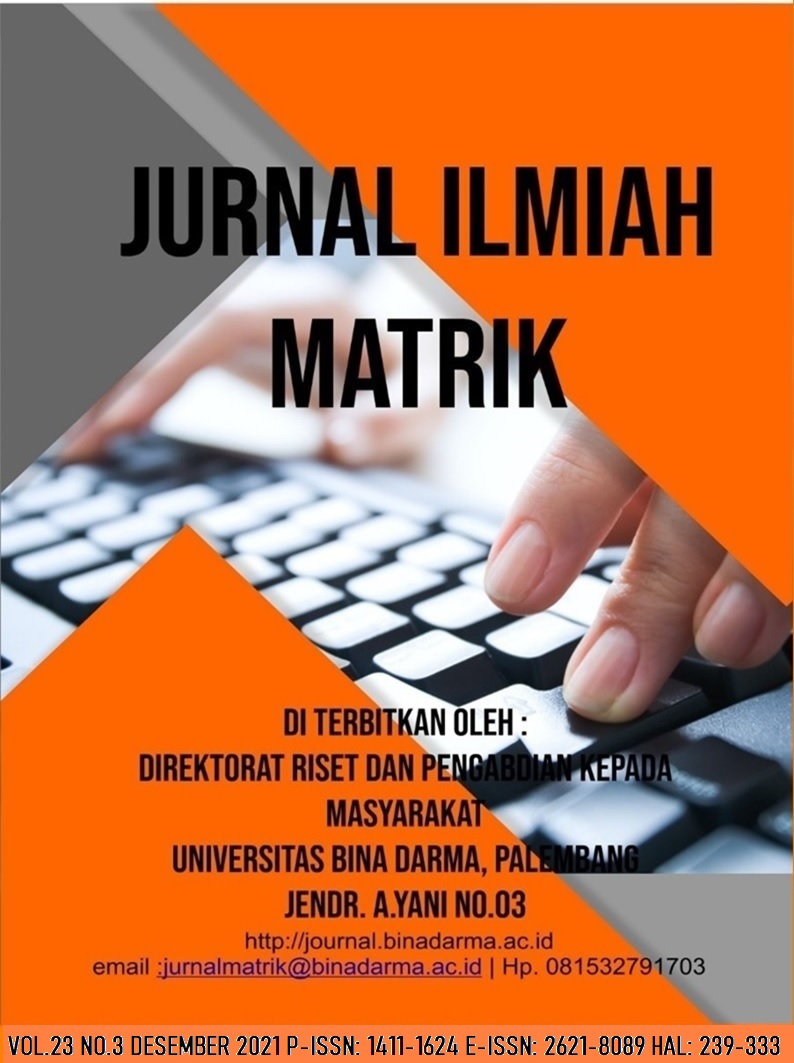KLASIFIKASI MALWARE DENGAN MENGGUNAKAN RECURRENT NEURAL NETWORK
DOI:
https://doi.org/10.33557/jurnalmatrik.v23i3.1592Keywords:
Classification, Malware, Deep learning, Recurrent Neural Network (RNN)Abstract
The development of technology today has undergone many changes that are quite fast and rapid. Along with the development of technology, the internet is used as a tool that can help in solving complex problems to be practical, and easy. The increase in internet users makes crimes that use technology also increase due to rampant cybercrime activities. One of the cybercrimes used by attackers is malicious software or what is often called malware. Malware is a malicious program created to damage or break into a software or operating system, wiretapping, gaining computer access rights without the knowledge and permission of the owner, manipulating bank transactions for profit, theft of personal data, financial loss and damage to the reputation of the organization. The Recurrent Neural Network (RNN) method is a network that has a fedback link, so that the resulting output network can be used as additional input for further resistance. Recurrent Neural Netwok (RNN) is a method that can recognize data patterns well and provide accurate predictions for classifying malware and non-malware (normal files) types using the N-grams feature. This study resulted in an accuracy of 86% and an F1 Score of 85% from the total data of 215 malware and non-malware data.
References
[2] F. Panjaitan and R. Syafari, “Pemanfaatan Notifikasi Telegram Untuk Monitoring Jaringan,” Simetris J. Tek. Mesin, Elektro dan Ilmu Komput., vol. 10, no. 2, pp. 725–732, 2019.
[3] T. H. A. Gregory, “Ketenaran Cybercrime di Indonesia,” Makal. STIMIK Perbanas, 2005.
[4] T. A. Cahyanto, V. Wahanggara, and D. Ramadana, “Analisis dan Deteksi Malware Menggunakan Metode Malware Analisis Dinamis dan Malware Analisis Statis,” Justindo, J. Sist. Teknol. Inf. Indones., vol. 2, no. 1, pp. 19–30, 2017.
[5] F. Ferdiansyah, “Analisis aktivitas dan pola jaringan terhadap eternal blue dan wannacry ransomware,” JUSIFO (Jurnal Sist. Informasi), vol. 2, no. 1, pp. 44–59, 2018.
[6] A. P. Aldya, N. Widiyasono, and T. P. Setia, “Reverse Engineering untuk Analisis Malware Remote Access Trojan,” J. Edukasi dan Penelit. Inf., vol. 5, no. 1, p. 40, 2019.
[7] J. W. G. Putra, “Pengenalan Konsep Pembelajaran Mesin dan Deep Learning,” Tokyo. Jepang, 2019.
[8] L. Chen, X. Pan, Y.-H. Zhang, M. Liu, T. Huang, and Y.-D. Cai, “Classification of widely and rarely expressed genes with recurrent neural network,” Comput. Struct. Biotechnol. J., vol. 17, pp. 49–60, 2019.
[9] T. Soendari, “Metode Penelitian Deskriptif,” Bandung, UPI. Stuss, Magdal. Herdan, Agnieszka, vol. 17, 2012.
Downloads
Published
Issue
Section
License
Jurnal Ilmiah Matrik by http://journal.binadarma.ac.id/index.php/jurnalmatrik is licensed under a Creative Commons Attribution-ShareAlike 4.0 International License.



